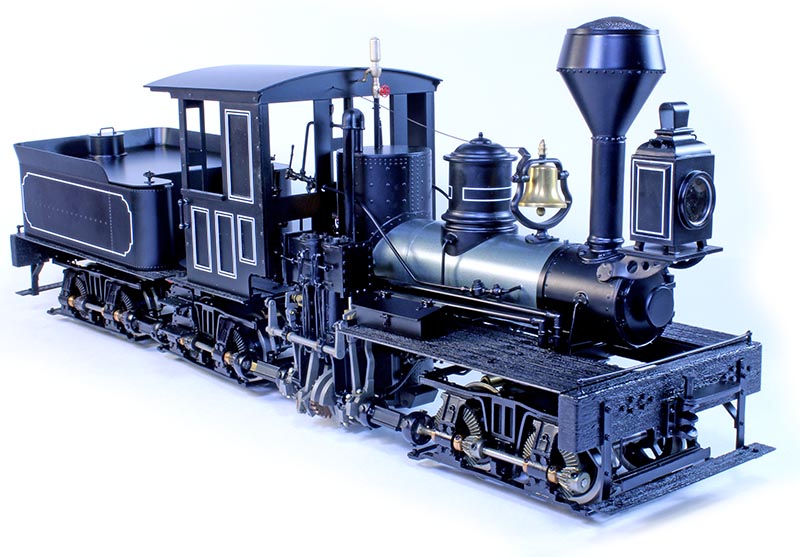Review by George Riley/photos by the author except as noted
Lima Machine Works of Lima, Ohio, began constructing geared logging and industrial locomotives based on Ephraim Shay’s pioneering designs and patents in 1880. Over the ensuing years the firm which had three subsequent corporate name changes over its life span, would build more than 2,700 Shay locomotives. Always a perennial favorite with railfans and model railroad hobbyists alike, a number of models of a variety of Shay prototypes have been offered in a range of scales.
Missouri Locomotive Company offers a 1:20.3 F scale model of an early, yet interesting prototype. Based on S/N 119 Buffalo was built for Andrew Brown of Buffalo, N.Y., to move timber over the Carter Caves & Olive Hill Railroad. This wooden railed, 42-inch gauge, roughly ten-mile-long line transported lumber from Mr. Brown’s timber holdings near Carter Caves in Carter County, Ky., to the railhead of the Elizabethtown, Lexington & Sandy River Railroad in Olive Hill, Ky. The unusual gauge of the line was in no doubt due to Andrew Brown being a subject of Great Britain and more than a little influenced by the latest railroad practices of that country.
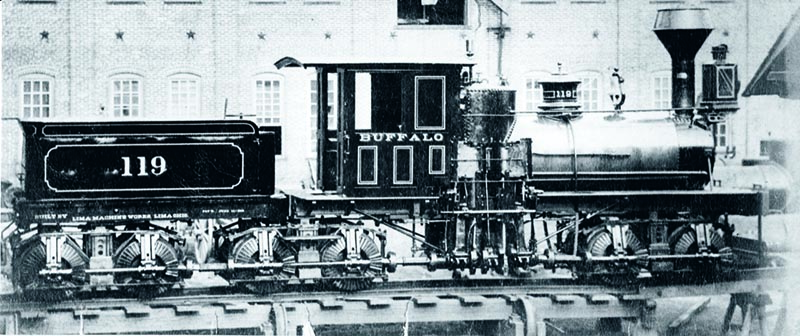
The Carter Caves & Olive Hill Railroad like many back woods railways originally was animal powered. However, in 1883 the railway was rebuilt and a two truck, 11 ton A class shay was delivered from Lima. The locomotive was named the Andrew Brown and had a shop number of 79. This first machine was followed in 1884 by the delivery of a second locomotive, S/N 97 an 18-ton A Class shay. This locomotive seemed prone to mishap during its brief career on the line, suffering a boiler failure and possibly being involved in a run-away that resulted in the death of the railway’s superintendent. S/N 97 was not moved to the Bull’s Eye Spring Narrow Gauge Railroad near Grayson, Ky., in 1885, and was probably scrapped in place near Carter Caves.
This brings us to Buffalo S/N 119 which was delivered to the railway on August 18, 1884. This locomotive was unique among all of the Shays built and delivered by Lima in that it was one of only two, two-cylinder, three truck shays. All subsequent three truck locomotives would have a bank of three cylinders for their power plant. Classed as either A/C 15-3 or SPL 15, this coal fired, fifteen-ton locomotive was among the earliest examples of three truck machines with the pivot for the tender/third truck attached at the bolster of the second truck. Operating with 100 pounds of steam pressure generated in its “boot” or “tee” boiler, Buffalo had an impressive 5,500 pounds of tractive effort.
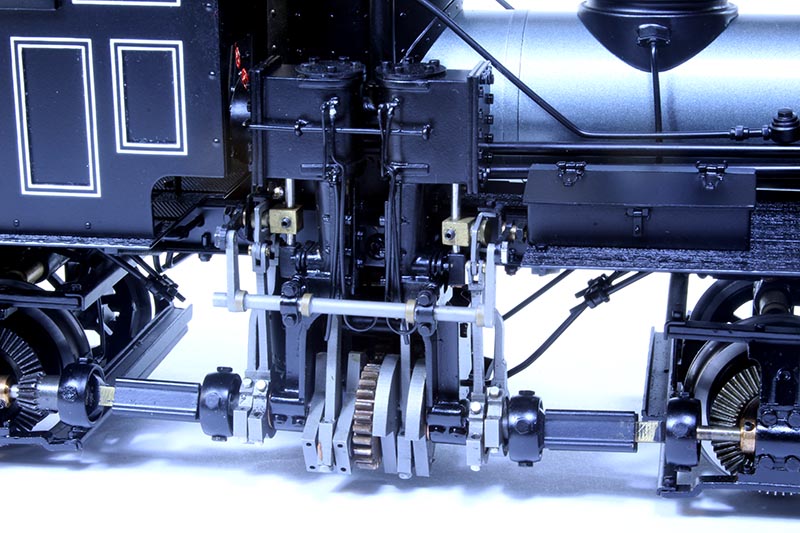
The Andrew Brown and Buffalo would be transferred to the Bull’s Eye Spring Narrow Gauge Railroad near Grayson, Ky., in 1885 to help harvest Mr. Brown’s timber holdings in this area. By 1899, Buffalo would have migrated to North Carolina where it would go through a series of owners well past 1909 before being scrapped. Its companion, S/N 79 would have an even longer service life ending its days in Pennsylvania in the 1920s. Buffalo did yeoman service for nearly two decades in the rough and tumble logging industry.
The Model
Packed securely in a plywood case with hinged lid the model was received in perfect condition. While unboxing, along with the locomotive a bag of additional details, including the tender deck, spark arrestor screen, several pins and two roosters plus a group of Allen wrenches and drivers was included. Once unboxed the separate tender/third truck assembly was attached to the main locomotive and the electrical contact between the two was plugged together and the model was placed on a section of 45 mm track. The drive line between the two sections was connected and loose detail parts added to complete the simple set up required. The model uses brass and steel in its overall construction.
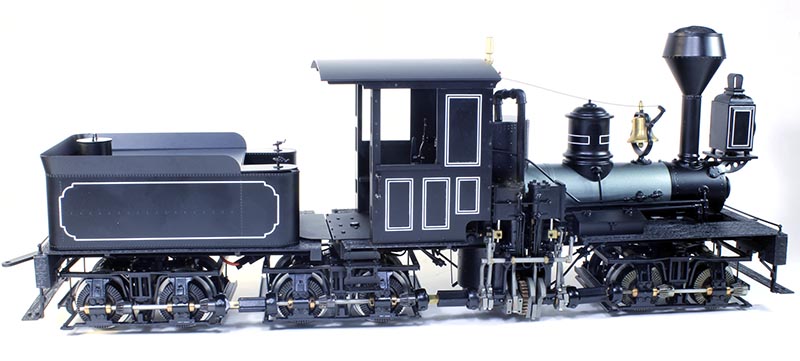
Visual inspection matched the model up to the Lima construction photo of the prototype currently held by the University of Michigan Engineering and Transportation Library (BP 8-1884). Neatly painted in overall black with a Russian iron boiler jacket, the model is lined in white similarly to the builder’s photo. Missing is the lettering on the cab and tender sill along with the number on tender shell. This was done intentionally, since it was felt that most purchasers would want to letter their models for their own railroads. In way of observation, even the most basic locomotives built in the 1900s were given an extra touch and as a general rule were elegantly finished. Paint and striping were neatly applied and opaque.
Further inspection of the model presented a nicely detailed backhead with a working firebox door and the various knobs pointed out in red. In addition to the throttle and reverse controls, is a valve lever for the steam brake. The top of the tee boiler hosts the requisite whistle, pressure release valve and piping. Following along the boiler top is the lined sand dome, brass bell with ringer, stack with spark arrestor and oil headlight. The two-cylinder power plant features counter balanced drive rods and moving Stephenson valve gear. The right side, drive line powers each wheel set through a realistic set of metal spur and bevel gears. Link and pin couplers along with a pair of roosters are realistic for an industrial logging locomotive of this era.
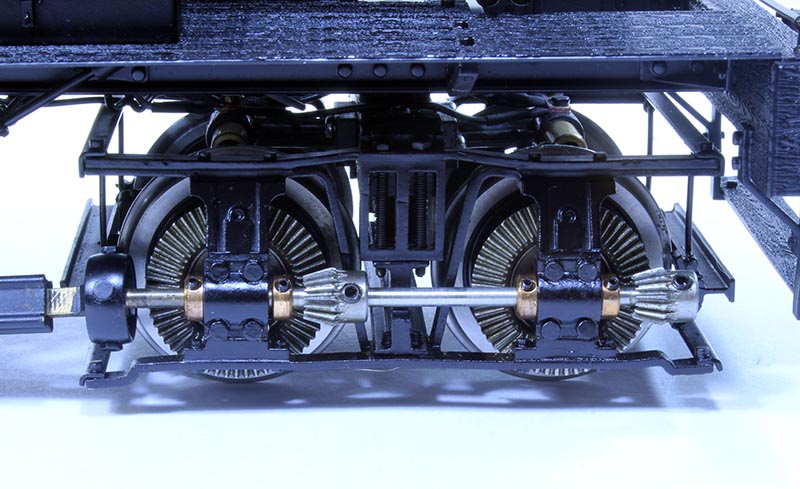
The smoke box front is easily removable allowing access to the motor leads in the boiler should after-market sound, smoke or electronic controls be added by the modeler. The base of the tender has holes over which a speaker can be mounted and there is ample space for adding batteries.
Operational testing was done using an MRC 9500 power pack with volt and amp meter. Current draw at 18 volts is 125 milliamps. This is remarkably low for a large-scale model and makes it easy to add battery power since a 1.2-amp battery which should provide hours of running, will easily fit into the tender without having to modify the locomotive’s structure. The model will operate on a four-foot minimum radius without issue, tighter will cause the slip couplings on the drive shaft to disengage. Buffalo is almost unique among locomotive models in that its calculated top speed of 13 scale miles per hour is slightly less than the listed 16.2 mph of the prototype’s specification. However, Shays are widely known for their sedate turn of speed and while seemingly slow the model is actually operating prototypically.
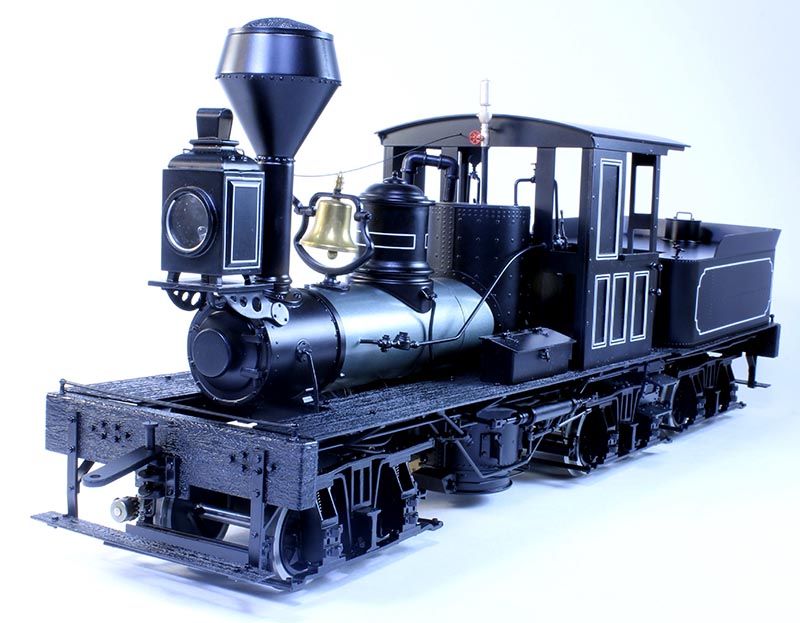
Shays with their whirring gears and visible mechanism are a real treat to watch in action. Buffalo is no less impressive, more so since it realistically captures a very early version of this type of locomotive as constructed by Lima Machine Works. The model’s fit and finish is exceptional as one would expect of a premium locomotive. Operation is flawless right out of the box with out some of the tinkering often needed to make a model run correctly. Buffalo easily handles a half dozen or more scale sized cars. The only real compromise made was gauging the locomotive for three-foot operation on 45 mm track versus the originals three-foot six-inch gauge. This is forgivable since to date I have yet to meet anyone in North America who models large scale using 52.5 mm gauge track.
Researching the prototype for this review used the online references of shaylocomotives.com; The Shay Locomotive – An illustrated History published by White River Productions; and The Carter Caves & Olive Hill Railroad 1881-1884 by Neal Salyers, published by The Mountain Press, Ashland, Ky.
Missouri Locomotive Company
info@moloco.biz
Buffalo Shay
Scale 1:20.3
MSRP $1995.00



